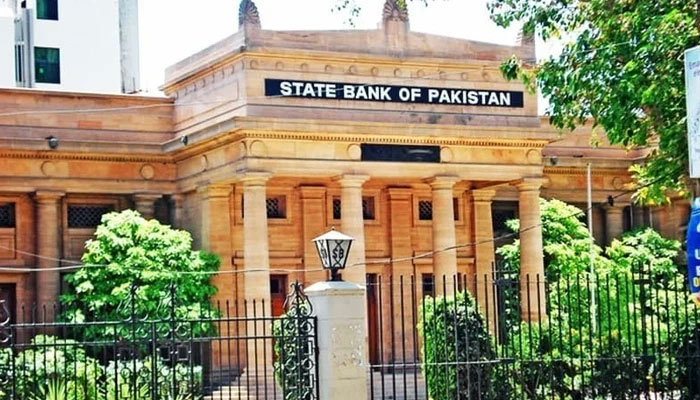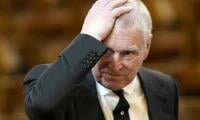SBP forex reserves drop to $5.57bn
Pakistan’s foreign currency deposits fell sharply in nine months of 2022 as savers withdrew dollars from bank accounts due to economic and political uncertainty
KARACHI: Pakistan’s foreign currency deposits fell sharply in nine months of 2022 as savers withdrew dollars from bank accounts due to economic and political uncertainty, dollar shortage as well as concerns that the country would not be able to meet its debt obligations to its creditors abroad.
The State Bank of Pakistan data shows foreign currency or FE 25 deposits at domestic banks dropped by $1.1 billion to $6.5 billion between February and November 2022. These deposits, held by Pakistanis, both residents, and non-residents, and also by some businesses, decreased by $1.3 billion in July 2021-November 2022, when the country’s foreign currency holdings were $7.8 billion.
Although a breakdown is not available, local people hold the majority of dollar deposits, with abroad Pakistanis holding only 12 percent of the total, according to analysts. A few businesses also have a few accounts in foreign currencies. Though the breakup is not available, out of the total dollar deposits, only 12 percent are held by overseas Pakistanis, while the remaining is held by local individuals. A few firms also have foreign currency accounts. These accounts can be fed by remittances received from abroad, and travellers cheques issued outside Pakistan. The forex reserves held by banks stood at $5.8 billion in the week ended December 30.
The trend of falling foreign currency deposits should be seen as a result of people’s experience in recent months. The country has been facing a severe balance of payments crisis and the economic situation is precarious. The rupee has been under pressure due to fast-depleting foreign exchange reserves, high external debt repayments and the government’s inability to secure financing from the IMF and other bilateral and multilateral lenders.
People withdrawing their foreign currency savings from banks due to the ongoing economic crisis is one of the apparent causes, according to analysts.
“I think it [decline in banks’ foreign currency deposits] has to do with overall shortage of dollars and premium in the black market. This is one motivation to sell in open market at higher rate and second could be the fears of accounts getting frozen due to default noise. So they might be keeping dollars out of banks,” said Fahd Rauf, the head of research at Ismail Iqbal Securities.
The spread between the currency rates in the open and interbank markets has increased to almost 30 rupees. In the interbank market, the rupee is trading at 227 to the dollar, but in the kerb dealings, it is at 257.
Yaseen Anwar, the former central bank governor, said the trade deficit in 2022, exacerbated by high oil prices (import bill), with static exports, lower inflows in remittances, and foreign direct investment. In addition, high debt servicing in USD included payment of over $1 billion for the Pakistan government bond.
“On top of the above, global supply chain disruptions leading to higher commodity prices, our own domestic political and economic instability, has eroded confidence and contributed to ‘Uncertainty’ that is anathema to investors,” Anwar said.
“We need to restore confidence and reduce uncertainty going forward...and quickly. The IMF agreement may be one step towards some semblance of confidence building along with ‘sustainable’ policies to stabilise our fiscal and current account deficits,” Anwar added.
-
 Spotify Introduces New Monthly Subscription Pricing Plan For 2026
Spotify Introduces New Monthly Subscription Pricing Plan For 2026 -
 Shocking Prediction About Meghan Markle's Career In 2026
Shocking Prediction About Meghan Markle's Career In 2026 -
 Kate Middleton Hosts Reception In London As Prince William Out On Engagement
Kate Middleton Hosts Reception In London As Prince William Out On Engagement -
 Mel C Teases 'precious' Future Plans
Mel C Teases 'precious' Future Plans -
 Teyana Taylor On Julia Roberts Telling Her To 'eat A Sandwich' At Golden Globes: 'Started Crying'
Teyana Taylor On Julia Roberts Telling Her To 'eat A Sandwich' At Golden Globes: 'Started Crying' -
 Minneapolis: ICE Officer Fires Bullet After Migrant Attacks With A Shovel
Minneapolis: ICE Officer Fires Bullet After Migrant Attacks With A Shovel -
 Prince William Gets 'mobbed' By Animals During Rural Engagement
Prince William Gets 'mobbed' By Animals During Rural Engagement -
 Angelina Jolie Finally Escaping L.A.?
Angelina Jolie Finally Escaping L.A.? -
 Matthew McConaughey Takes Legal Action To Save THIS Iconic Phrase From AI Misuse
Matthew McConaughey Takes Legal Action To Save THIS Iconic Phrase From AI Misuse -
 Jodie Foster Reflects On Harsh Reality Of Why She Escaped Sexual Abuse As Actress
Jodie Foster Reflects On Harsh Reality Of Why She Escaped Sexual Abuse As Actress -
 Prince Harry, Meghan Markle To Have Baby In 2026?
Prince Harry, Meghan Markle To Have Baby In 2026? -
 Bella Hadid Steals The Spotlight At 'The Beauty' Premiere
Bella Hadid Steals The Spotlight At 'The Beauty' Premiere -
 Taylor Swift 'worst Photos': Singer's Not-so-perfect Moments Spark Debate
Taylor Swift 'worst Photos': Singer's Not-so-perfect Moments Spark Debate -
 Arizona Mother Traces Missing Son Living In Neighbour’s Home After Killing Hm
Arizona Mother Traces Missing Son Living In Neighbour’s Home After Killing Hm -
 OpenAI Launches ChatGPT Translate To Rival Google Translate
OpenAI Launches ChatGPT Translate To Rival Google Translate -
 Top AI Themes Poised To Shape 2026: Here’s How
Top AI Themes Poised To Shape 2026: Here’s How




